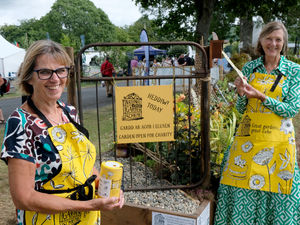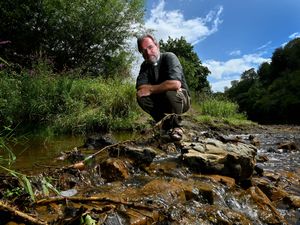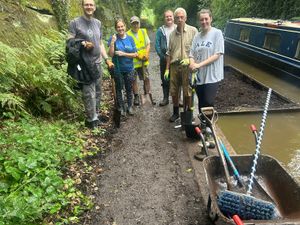Decades of trying to stem the floods along the Severn
It was the straw which broke the camel's back.
Images of a flood-stricken Ironbridge were beamed around the world. Hundreds of people were evacuated as the rampant River Severn pushed back the flood barriers to within inches of businesses along the normally thriving Wharfage.
The nation finally breathed a sigh of relief as the flood defences held firm, and the water receded, but this time it had come too close for comfort.
Of course, flooding in Ironbridge is nothing new, with hardy veterans quick to recall similar incidents in the past.
"I have seen it before," said Mike Perks, who kept Cleo's cocktail bar in the town.
"We had it in 2002, and it was pretty bad in 1997."

It was these floods which finally led to the temporary flood barriers being installed for the first time in February, 2004.
The Swedish flat-pack barriers, which drew inevitable comparisons to furniture from a well-known furniture retailer, were a relatively low-cost solution to the problem, costing a modest £300,000, and taking about a day to assemble. Similar equipment had been in use in Sweden since the mid-1990s.
But while the barriers have provided some much-needed respite over the past 18 years, the 2020 floods demonstrated the need for a more sophisticated way of defending the town. Councillor Shaun Davies, leader of Telford & Wrekin Council, and Councillor Lezley Picton, his counterpart on Shropshire Council, have been among those calling for more permanent flood defences in Ironbridge.
“Flooding is becoming the new normal, so our residents and businesses need to be more protected and better prepared," said Councillor Picton.
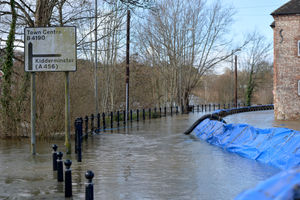
She said emergency funding, to deal with events as they happen, was no longer enough.
"Of the 80 severe flood alerts recently issued, 44 applied to the River Severn. We need the Government to support our efforts and develop a much-needed long-term solution.”
Councillor Davies pointed out that the Ironbridge Gorge was the only World Heritage Site in the West Midlands, and a permanent solution needed to be found to protect it.
Daniel Kawczynski, MP for Shrewsbury and Atcham, has said that flooding represents the biggest obstacle to economic growth in his constituency.
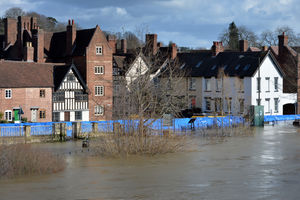
In January 2002, work began on installing demountable flood barriers in the Frankwell area of town, and these proved successful when they were used for the first time in February, 2004.
These consisted primarily of steel walls going more than 50ft below the earth's surface, limiting the flow of water beneath the ground. They also act as a foundation for reinforced concrete walls up to 10ft high and aluminium barriers which can be installed when a flood is imminent.
It was said at the time that these would be sufficient to deal with a one-in-a-hundred-year event, but the floods of 2020 proved that more was needed.
Mr Kawczynski, who set up an all-party group made up of MPs for areas along the whole of the River Severn, has called for a scheme which will look at managing the whole of the river, rather than localised schemes in individual towns which he says often just push the problem further downstream.
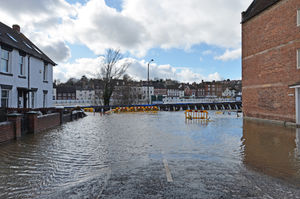
Bewdley had suffered decades of flooding when work began on an £11 million flood defence scheme in 2001.
Records showed that some properties in the town had been flooded 30 times over the course of 100 years, but previous proposals had been met by opposition from residents who believed they would have a detrimental impact on the the picturesque Georgian town. But record floods in 2000 finally convinced residents that action was needed.
Discrete flood walls were built along Severn Side, a popular area lined with pubs and pavement cafes. Detachable flood barriers, which can be erected within 11 hours, were also added. Work was finally completed in March, 2006.
Despite fears about how it would affect the appearance of the town, the work has largely been well received, and the barriers have succeeded in stopping floods on the western side of the river. Less effective, though, have been the efforts to protect flooding to the east of the Severn, with Beales Corner having become something of a blackspot in recent years, its defences being breached once more in February this year.
Wyre Forest MP Mark Garnier has called for further measures to protect this area.

